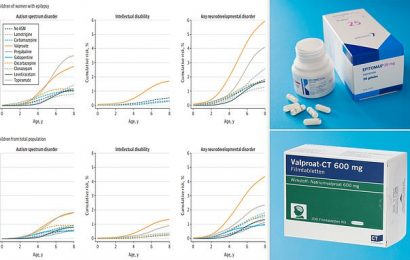
Physician-assisted suicide, as it’s formally known, has been legal in the U.S. state of Oregon since 1997 under the Death with Dignity Act.
The legislation allows terminally ill residents over the age of 18 to hasten their death by taking lethal drugs prescribed by a doctor, providing they are capable of making and communicating health care decisions, and are likely to die within the next six months.
Since 1998, Oregon Health Authority has published an annual report detailing the demographics of those accessing an assisted death, their diagnoses, health funding status, lethal drugs used, patient concerns, the care provided, clinical complications, and the timings of an assisted death.
Oregon is often cited as a stable example of assisted dying legislation, so the researchers wanted to see if there had been any changes over the 25 years of reporting.
They analyzed the data in every annual report from 1998 to 2022, specifically looking at the numbers of patients prescribed lethal drugs under the legislation, their insurance status, reasons for wanting an assisted death, and the qualifying illness.
Information on clinical complications was often missing, while key information on the factors behind medical decision-making, the effectiveness of the lethal drugs used, and the extent of palliative care support wasn’t even collected, reveals their review, published in BMJ Supportive & Palliative Care.
Some 2,454 people died an assisted death during this period. Their average age was 72. In 1998, 24 prescriptions were written for lethal drugs and 16 patients died as a result. On average, the number of lethal drugs prescribed under the legislation increased by 13% each year, with the annual number of assisted deaths rising by 16%. In 2022, 431 prescriptions were written, and 278 patients died as a result.
The proportion of those with private health insurance fell from 65% to 20% over the 25 years; most (80%) had government (Medicare or Medicaid) health insurance in 2022.
In the first 5 years of the legislation, nearly a third (30%) of participants were concerned about being a burden. Since 2017, this has been cited by around half of those opting for an assisted death: 46% in 2022.
Cancer has remained the main qualifying diagnosis, although this fell from an average of 80% in the first 5 years of the legislation to 64% by 2022. But since 2010, various other diagnoses have qualified, including non-terminal illness, such as arthritis, complications from a fall, hernia, and anorexia nervosa.
The length of the doctor-patient relationship reduced over time, the review shows, falling from 18 weeks, on average, in 2010, to 5 weeks in 2022.
And referrals for psychiatric evaluation also steadily declined. In the first 3 years of the legislation doctors requested psychiatric assessment in an average of 28% of cases. By 2003 this had dropped to 5%, and in 2022, just 1% of participants underwent psychiatric evaluation.
The reduction in doctor-patient time “may have made it more difficult to identify treatable factors influencing the wish to die,” suggest the researchers, noting a lack of recent data on how many participants had treatable depression—a factor known to influence a person’s wish to die.
There was also a worrying lack of data on those who didn’t take the lethal drugs they were prescribed, and how they were advised and counseled in the first place, note the researchers.
Information on complications, including those whose death was prolonged or who regained consciousness, was often missing. These data were absent for 206 out of the 278 (74%) assisted deaths in 2022.
In 2022, most (92%) people requesting assisted death were enrolled in hospice care and the average for 1998–2020 was 91%. But there was no information on what services were provided, or by whom, making it difficult to evaluate whether adequate palliative care was received before assisted death, say the researchers.
This is an observational study, and the researchers acknowledge various limitations to their findings, including that data verification wasn’t possible, because Oregon destroys all source records a year after each annual report.
Nor are data collected on how or why assisted dying decisions are made, pre-evaluation or post mortem review of cases, or the details of rejected requests. As physicians aren’t required to be present when lethal drugs are taken, the reports depend on information provided by whomever was present at the time.
“Despite Oregon producing detailed and regular post-death reports of value, there are considerable gaps in the data across US states. Most importantly, there is no monitoring in any form of the quality of the consultation in which the decision was made to prescribe lethal drugs,” conclude the researchers.
“Detailed, prospective studies that include socioeconomic and clinical information are essential to understand fully the changes seen in Oregon [physician assisted suicide] data,” they add.
More information:
Oregon Death with Dignity Act access: 25 year analysis, BMJ Supportive & Palliative Care (2023). DOI: 10.1136/spcare-2023-004292
Journal information:
BMJ Supportive & Palliative Care
Source: Read Full Article


